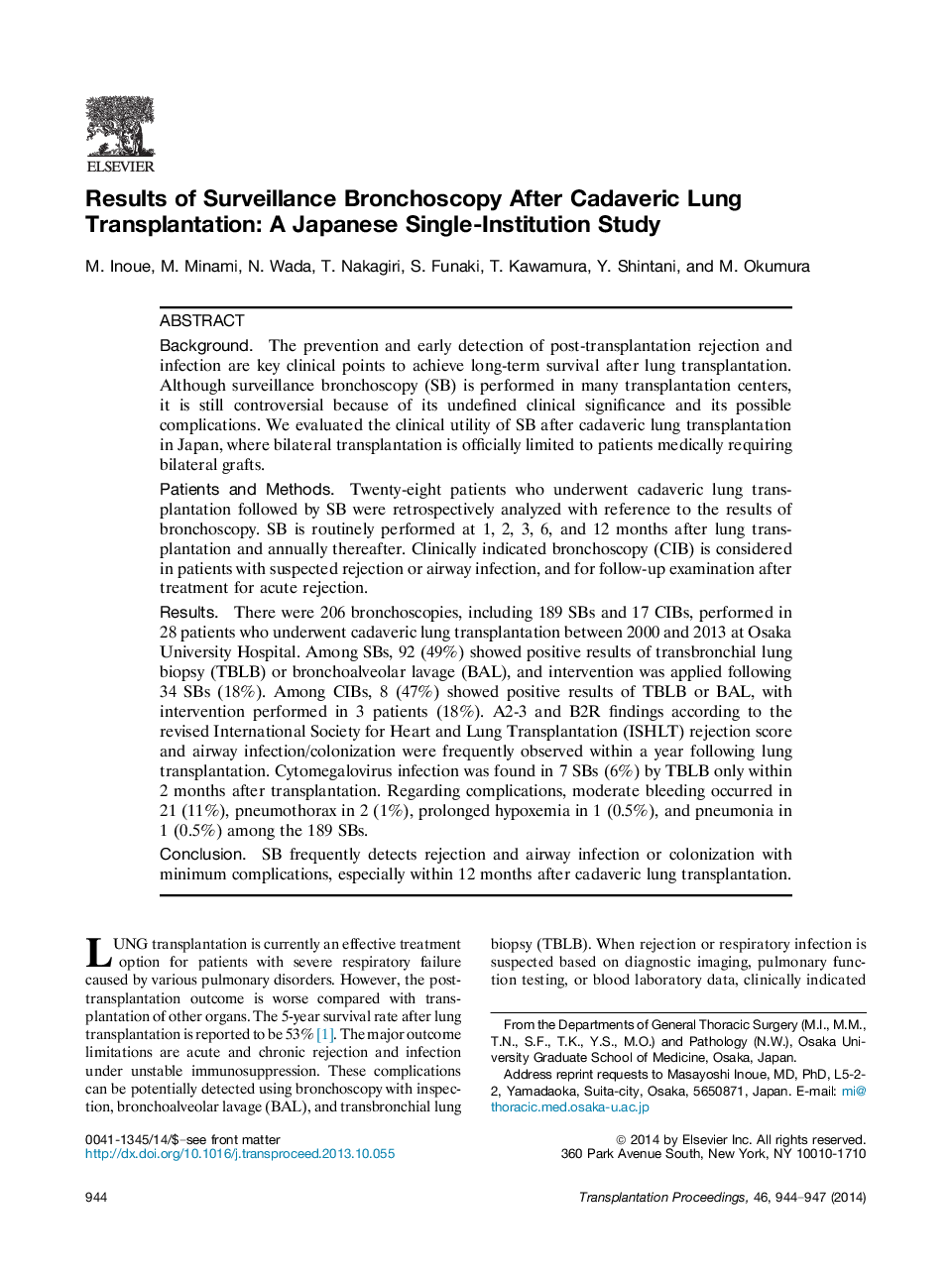| Article ID | Journal | Published Year | Pages | File Type |
|---|---|---|---|---|
| 4258433 | Transplantation Proceedings | 2014 | 4 Pages |
BackgroundThe prevention and early detection of post-transplantation rejection and infection are key clinical points to achieve long-term survival after lung transplantation. Although surveillance bronchoscopy (SB) is performed in many transplantation centers, it is still controversial because of its undefined clinical significance and its possible complications. We evaluated the clinical utility of SB after cadaveric lung transplantation in Japan, where bilateral transplantation is officially limited to patients medically requiring bilateral grafts.Patients and MethodsTwenty-eight patients who underwent cadaveric lung transplantation followed by SB were retrospectively analyzed with reference to the results of bronchoscopy. SB is routinely performed at 1, 2, 3, 6, and 12 months after lung transplantation and annually thereafter. Clinically indicated bronchoscopy (CIB) is considered in patients with suspected rejection or airway infection, and for follow-up examination after treatment for acute rejection.ResultsThere were 206 bronchoscopies, including 189 SBs and 17 CIBs, performed in 28 patients who underwent cadaveric lung transplantation between 2000 and 2013 at Osaka University Hospital. Among SBs, 92 (49%) showed positive results of transbronchial lung biopsy (TBLB) or bronchoalveolar lavage (BAL), and intervention was applied following 34 SBs (18%). Among CIBs, 8 (47%) showed positive results of TBLB or BAL, with intervention performed in 3 patients (18%). A2-3 and B2R findings according to the revised International Society for Heart and Lung Transplantation (ISHLT) rejection score and airway infection/colonization were frequently observed within a year following lung transplantation. Cytomegalovirus infection was found in 7 SBs (6%) by TBLB only within 2 months after transplantation. Regarding complications, moderate bleeding occurred in 21 (11%), pneumothorax in 2 (1%), prolonged hypoxemia in 1 (0.5%), and pneumonia in 1 (0.5%) among the 189 SBs.ConclusionSB frequently detects rejection and airway infection or colonization with minimum complications, especially within 12 months after cadaveric lung transplantation.
